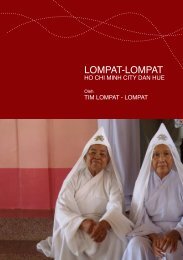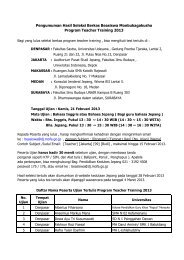9700_y16_sy
9700_y16_sy
9700_y16_sy
Create successful ePaper yourself
Turn your PDF publications into a flip-book with our unique Google optimized e-Paper software.
Cambridge International AS and A Level Biology <strong>9700</strong> <strong>sy</strong>llabus Syllabus content<br />
16 Inherited change<br />
Genetic information is transmitted from generation to generation to maintain the continuity of life. In<br />
sexual reproduction, meiosis introduces genetic variation so that offspring resemble their parents but<br />
are not identical to them. Genetic crosses reveal how some features are inherited. The phenotype<br />
of organisms is determined partly by the genes they have inherited and partly by the effect of the<br />
environment. Genes determine how organisms develop and gene control in bacteria gives us a glimpse of<br />
this process in action.<br />
Candidates will be expected to use the knowledge gained in this section to solve problems in familiar and<br />
unfamiliar contexts.<br />
Learning outcomes<br />
Candidates should be able to:<br />
16.1 Passage of information from<br />
parent to offspring<br />
Diploid organisms contain pairs<br />
of homologous chromosomes.<br />
The behaviour of maternal and<br />
paternal chromosomes during<br />
meiosis generates much<br />
variation amongst individuals<br />
of the next generation.<br />
a) explain what is meant by homologous pairs of chromosomes<br />
b) explain the meanings of the terms haploid and diploid and the<br />
need for a reduction division (meiosis) prior to fertilisation in<br />
sexual reproduction<br />
c) outline the role of meiosis in gametogenesis in humans and<br />
in the formation of pollen grains and embryo sacs in flowering<br />
plants<br />
d) describe, with the aid of photomicrographs and diagrams, the<br />
behaviour of chromosomes in plant and animal cells during<br />
meiosis, and the associated behaviour of the nuclear envelope,<br />
cell surface membrane and the spindle (names of the main<br />
stages are expected, but not the sub-divisions of prophase)<br />
e) explain how crossing over and random assortment of<br />
homologous chromosomes during meiosis and random fusion<br />
of gametes at fertilisation lead to genetic variation including<br />
the expression of rare, recessive alleles<br />
Back to contents page<br />
www.cie.org.uk/alevel<br />
39





